Why aren’t the dogs eating the dog food?
Posted by Robert Beauchemin on Apr 1, 2008
Many organizations throw sales people out on the street in the hope they will make their companies successful. Although sales success is not possible without great sales people, a lot more than hiring great sales people is required to achieve sales success.
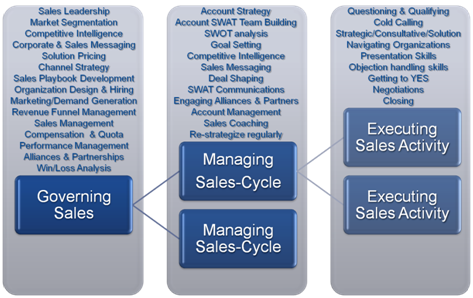 Sales leadership starts in the office of the CEO. The office of the CEO must induce a culture of strategic selling to the whole organization. Selling strategically means implementing a Sales Governance Model and developing competencies at 3 levels: Sales Governance, Sales-Cycle Management and Sales Execution.
Sales leadership starts in the office of the CEO. The office of the CEO must induce a culture of strategic selling to the whole organization. Selling strategically means implementing a Sales Governance Model and developing competencies at 3 levels: Sales Governance, Sales-Cycle Management and Sales Execution.
As you look at the list of competencies an organization has to develop, at various levels of its hierarchy, it is not surprising that there are many weak spots that need serious attention.
Bad sales leadership is just as lethal as ineffective closing skills. Going after the wrong market is just as ineffective as delivering poor customer presentations. Keeping underperforming sales people is just as expensive as working on unqualified prospects.
A great sales person will manage his/her sales cycles to mitigate other weaknesses in the organization's selling paradigm, but it would be a mistake to believe all your sales people are at that level of efficiency and effectiveness. Less than 10% are.
To make the other 90% of their sales people more successful, organizations should look at their sales model in a holistic manner. It is my belief that organizations are responsible for the success of their sales people, and not the other way around.
You can read more here… GOOD SELLING !
“If I can’t picture it, I can’t understand it”
Posted by Robert Beauchemin on Mar 25, 2008
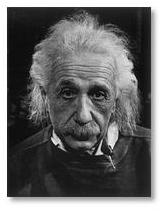 This famous quote from Albert Einstein rings so true to me. If Einstein needed a picture to understand, be assured it is even truer for employees. I have met with 8 CEOs over the last week. They all had a few things in common:
This famous quote from Albert Einstein rings so true to me. If Einstein needed a picture to understand, be assured it is even truer for employees. I have met with 8 CEOs over the last week. They all had a few things in common:
- They are all entrepreneurs
- They all have great ambitions and aspirations
- They are all brilliant people
- They all want to grown their company
- They all want to "shake" their companies from their torpor
But, as they explained how they were going to shake the torpor, I have to say that all of them were all over the map. All of them!
So, how is their staff supposed to get it? This erratic discourse is symptomatic of organizations who have not done the basic effort of analysing precisely how they got were they are. They are not creating a plan to shake the torpor; they are throwing ideas together that further shows the lack of deep reflection. Read the rest of this entry »
What makes a great CEO?
Posted by Robert Beauchemin on Mar 18, 2008
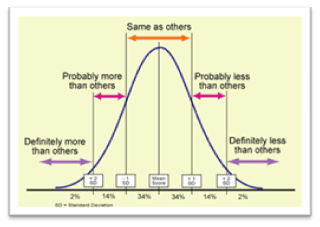 Let's start with the premise that CEOs are not all equal.
Let's start with the premise that CEOs are not all equal.
Like in any population, the population of CEOs is grouped according a standard Bell Curve. 2% are exceptionally good, 14% are good, 68% are average, 14% are not good, and 2% are exceptionally bad.
What gives an extra edge for a CEO?
I submit it is a broad base of experiences.
You are looking for a CEO that has successfully acted in multiple industries and varying types of organizations, and doing so, has developed different sets of muscles.
He/she has experienced selling fewer larger ($10M+) transactions as well as smaller and high volume transactions.
He/she worked in complex (Outsourcing/ERP/Engineering) solutions, or simple over-the-counter consumer transactions.
He/she dealt with sophisticated customers (Governments/Corporate America) and sold over the web, where there is hardly any interaction.
He/she ran organizations operating with 80% gross margin and 25% EBITDA and in those with 25% Gross Margin and 10% EBITDA.
You want the same CEO to have also run companies in different geographies, against different political backdrops.
He/she has also lead a start-up company, did turnarounds and sat atop a large corporation.
And he/she has run a subsidiary for an American as well as for a European company.
You want someone who has lived through fast growth, but also knows what it feels like to fire 25% of the staff, or to take a company out of stagnation.
You want some who has run both a private and a public company.
And yes, you want someone who has come very close to missing payroll.
Evidently, no single CEO has all of that. And if you ever find one with all that experience, he/she has to be what Jim Collins calls a Level-5 Executive. Someone who has built enduring greatness through a paradoxical blend of personal humility and professional will.
So may be, hiring someone from the industry is not all that great after all. Someone who knows that success is always shared with the executive team, and failures never can be. So where do you find someone like this? Not necessarily in your industry!
Is leading a company like driving a car?
Posted by Robert Beauchemin on Mar 11, 2008
 I was having lunch with a great CEO and we talked about how much tolerance many CEOs have about driving without a clear understanding of their organization overall destination. It made me think about how analogous it is to driving to somewhere. Leading an organization is very much like driving your family somewhere!
I was having lunch with a great CEO and we talked about how much tolerance many CEOs have about driving without a clear understanding of their organization overall destination. It made me think about how analogous it is to driving to somewhere. Leading an organization is very much like driving your family somewhere!
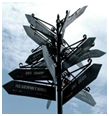 CEOs know what road they are on. They know how fast they are going. They know how much fuel they have and how much they need to the next gas station.
CEOs know what road they are on. They know how fast they are going. They know how much fuel they have and how much they need to the next gas station.
They are aware of the traffic around, other drivers competing for space, position, speed, leadership. They see the confusing market signs pointing you to a whole bunch of directions, perhaps not relevant to them, but are they really?
They know their car, what it is capable of, how much it can be pushed, its past performance and how to tweak it to get the most out of the machinery.
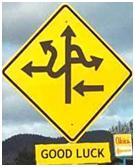 But when asked "where are you going", they will talk about the next exit, the next town, or the next stop at the end of the day, but beyond that, they just can't say clearly. Somewhere over there!. Or they will say they are building on their strengths as they go.
But when asked "where are you going", they will talk about the next exit, the next town, or the next stop at the end of the day, but beyond that, they just can't say clearly. Somewhere over there!. Or they will say they are building on their strengths as they go.
Well, this may be fine on a bright sunny day. But when the weather or the road conditions worsen, they become disoriented and focus even more on the next exit. And forget about asking for directions, advice or getting counsel. It feels they are relying on Good Luck.
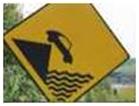 Knowing the end destination, and having prepared many itineraries, may have allowed the CEO to take a different, less travelled, less damaged, but safer road. And perhaps a faster road!
Knowing the end destination, and having prepared many itineraries, may have allowed the CEO to take a different, less travelled, less damaged, but safer road. And perhaps a faster road!
I would suspect that women in leadership positions, unlike men's driver reputation in real life, are more likely to be OK about asking for directions. Are CEO's more prone to driving off the end of the road than asking for coaching?
Having a clear vision (a view to an Envisioned Future) and a set of stratagems (the several roads you may want or have to take) is simply not an option.
Why a leadership framework?
Posted by Robert Beauchemin on Mar 9, 2008
After running several companies, ranging from a few employees to several hundreds, and after reading 100s of management books, I remained unsatisfied. None of these books could have been sufficient as a single guide to help me in any of my leadership jobs.
They were all great books, and I mean that – really great books. You can see some of my favorites here <http://rgbglobal.com/html/bibliography.html>.
The reason for my dissatisfaction is because, individually, each book helped solve some of my issues as a CEO, but in an unconnected way. This unconnectedness was my big problem. I had to make the connections myself; I had to reconcile what one author said, with what another professed. Every time, although no connection was evident at first, my experience told there were several very complex connections.
How was I supposed to connect the notions of strategic planning theory with the best execution practices? What is it that drives shareholders value? Picking the right strategy is the first step, but only the first step. Picking the right strategy is essential, but insufficient, if the strategy does not get executed. How do link hiring with shareholder value creation? By having the right people, with the right personalities, in the right seat that are able to deliver the strategy.
As a leader, I had to understand the connections between the various leadership principles. That led me to develop a leadership framework